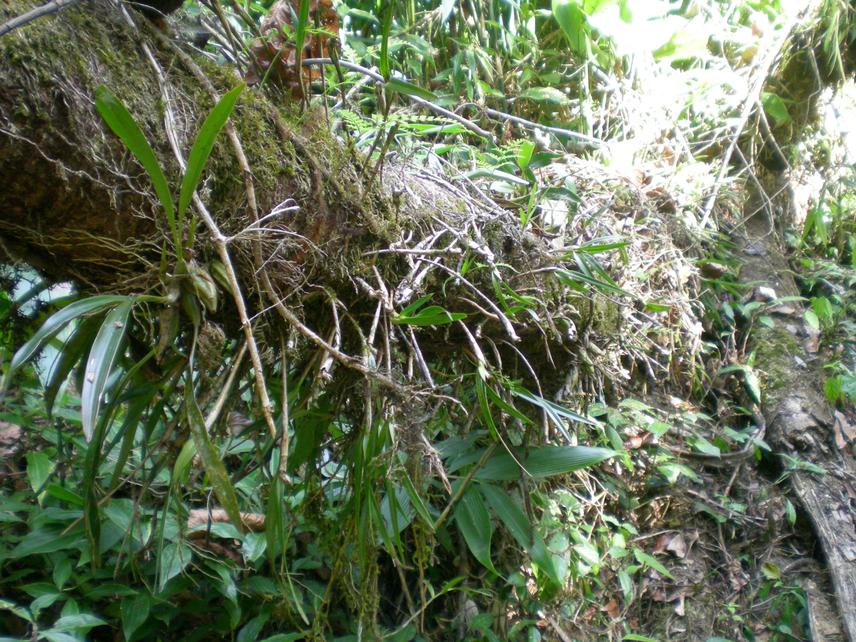Lahpai Htu Raw
To assess and monitor the status of endangered endemic black orchid (Paphiopedilum wardii) and to make awareness among the local indigenous people for conservation and sustainable utilization of native orchids.

Native orchids being planted naturally near by Nam Sa Bum village.
Putao district, the mountainous region descendent from eastern Himalayas, situated far north of Myanmar in Kachin State is famous for its nature of originated flora; especially various kinds of orchids and even the world rarest Black orchid or Slipper orchid (Paphiopedilum wardii) or “Thit-khwa Net” (vernacular). Of the nine species of orchids on the World’s Endangered Species List, five are from Myanmar. P. wardii is endemic to Myanmar and it is a critically endangered species. It is known as Black orchid and regarded as rarest orchid in Myanmar. At present, overusing, shifting cultivation practice and neglecting survival of the native orchids make this flora endangered.
The project intends to make conservation awareness through educational programmes among indigenous community of this region for the interest of local people in the conservation of native flora or rare orchids, and better understanding of their environment and sustainable utilization of the valuable natural resources. Project duration is 14 months and the following major activities will be carried out:
1) Field surveys
Population level, wild habitats and ecology studies on Paphiopedilum wardii and survey on native orchids will be done.
2) Orchid rehabilitation centres
Detached or fallen alive native orchid species will be transferred and care in the orchid rehabilitation centres constructed mostly of local materials such as bamboo. The orchid rehabilitation centres will be built at the appropriate sites. Local volunteers will be trained for species identification of collected orchids and handling of the detached orchids in the rescue house.
3) Awareness creation and restoration with interested communities
Delivering conservation talks which include sustainable utilization of the native flora, importance of epiphytic orchids to forest ecosystem and conservation of rare orchid species will be made and educated to the local indigenous people and school children. The detached orchids from the rehabilitation house will be relocated in the region in the suitable hosts with interested parties.